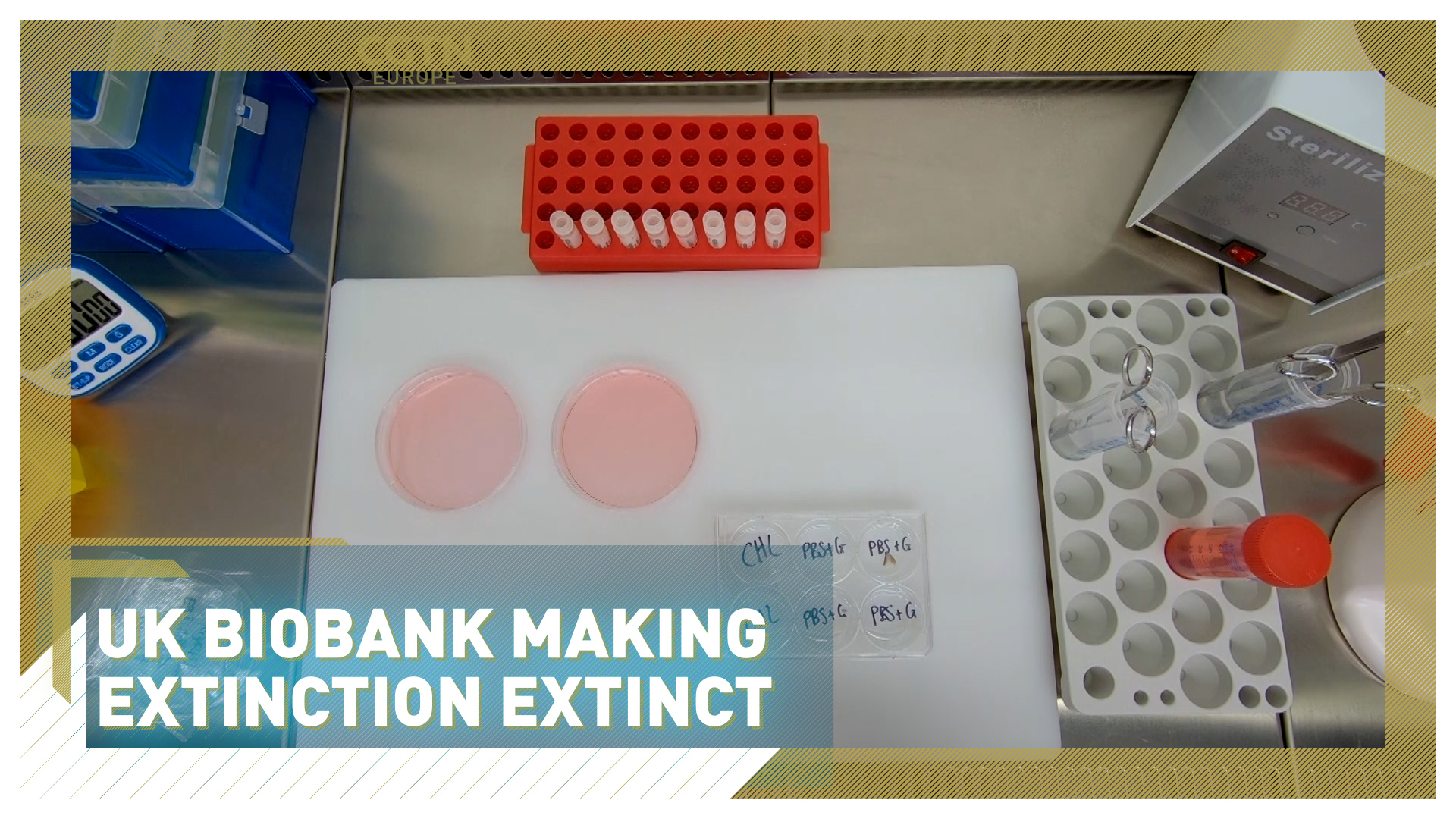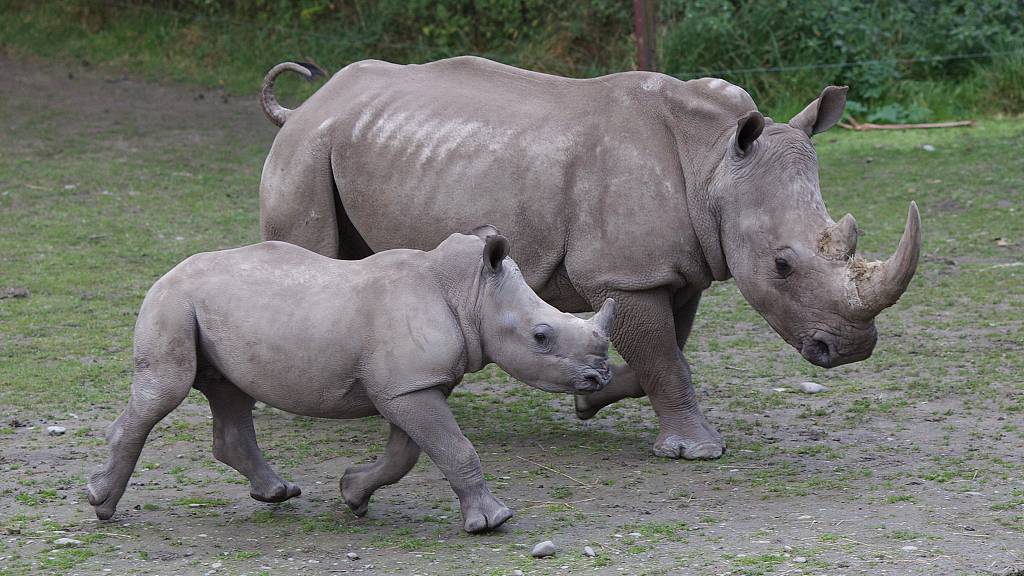03:16

As ever more species are threatened with extinction, a ground-breaking UK conservation charity, Nature's Safe, is developing new methods to record and preserve live genetics by freezing cell samples in a biobank.
Dr Tullis Matson founded the Nature's Safe project two years ago and his team has since collected and stored tissue samples from around 140 species, including mammals, birds, amphibians and reptiles.
"We want to preserve as many species that are on the brink of extinction - their tissue samples - because the tissue samples hold unique DNA," " said Dr Matson.
"If we've got the unique DNA and we preserve it live, we can in theory bring that animal back to life in many, many years to come."

Nature's Safe has stored samples of animals, including the Southern white rhino. /Tim Clayton/Corbis/VCG
Nature's Safe has stored samples of animals, including the Southern white rhino. /Tim Clayton/Corbis/VCG
Now working in collaboration with eight different zoos, including the Zoological Society of London (ZSL), specialists from the charity process and store genetic samples taken from the tissues of deceased endangered animals, using a special range of cryo-protectants.
“We're freezing at minus 196 with a cryo-protector," says Dr Matson. "And the cryo-protector is like an anti-freeze. So, it looks after that cell. It dehydrates that cell. So, when we thaw it out it rehydrates, and it survives the potentially lethal processes of freezing.”
The frozen samples are stored in a special tank, a kind of high-tech Noah's Ark. Among them are cells taken from a southern white rhino, an Asian elephant, a black jaguar, a cheetah and a Komodo dragon.
The charity also sources and then stores sperm samples from endangered animals such as elephants. All these could be kept indefinitely and could potentially one day be thawed out to recreate an extinct species using assisted reproductive technologies.
READ MORE
Spanish police raid Europe's drug 'super cartel'
The family with six generations of UK-China trading
China's forgotten heroes
American scientists have already used this technology to successfully clone a rare black-footed ferret using cells that had been stored for thirty years.
“The concept has been proven”, says Dr Matson. “But now we have to bank as many of these species as we can, before they're lost. There are nearly a hundred species a day going extinct. There's virtually one every 15 minutes. So, we have to act very, very quickly.”
This ambitious project is complex and costly, with 50 different genetic lines required to sustain just one species. ZSL says collaborating with the Nature's Safe preservation program is yet another tool for conserving wildlife, along with its research and field conservation.
But with 40,000 species threatened by extinction globally, that conservation work is more urgent than ever.
"They need a tool in the toolbox to be able to bring these species back to life, if they're at the brink of extinction," said Dr Matson. "We've got a cell bank of these samples. We can thaw them out and reuse them and reuse those genetic to actually maybe stop the biodiversity loss and stop that species that's on the cliff that's about the disappear. We can inject a new line. It can literally stop it from going extinct."
By the time these cell samples are unfrozen in decades to come and are used for potential regeneration purposes, technology may well have moved on. For now, this back-up plan to slow down biodiversity loss is giving conservationists some hope to save the most vulnerable species. But much more work lies ahead.